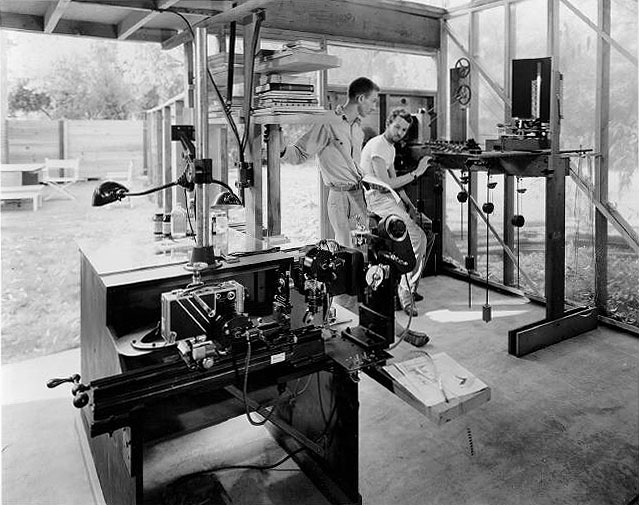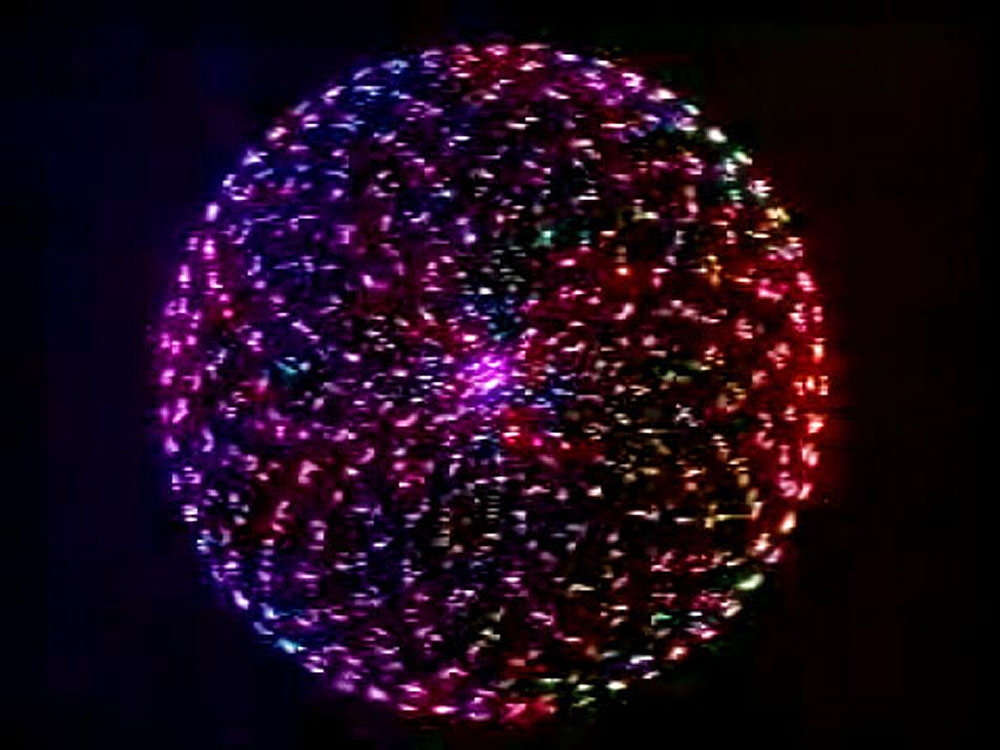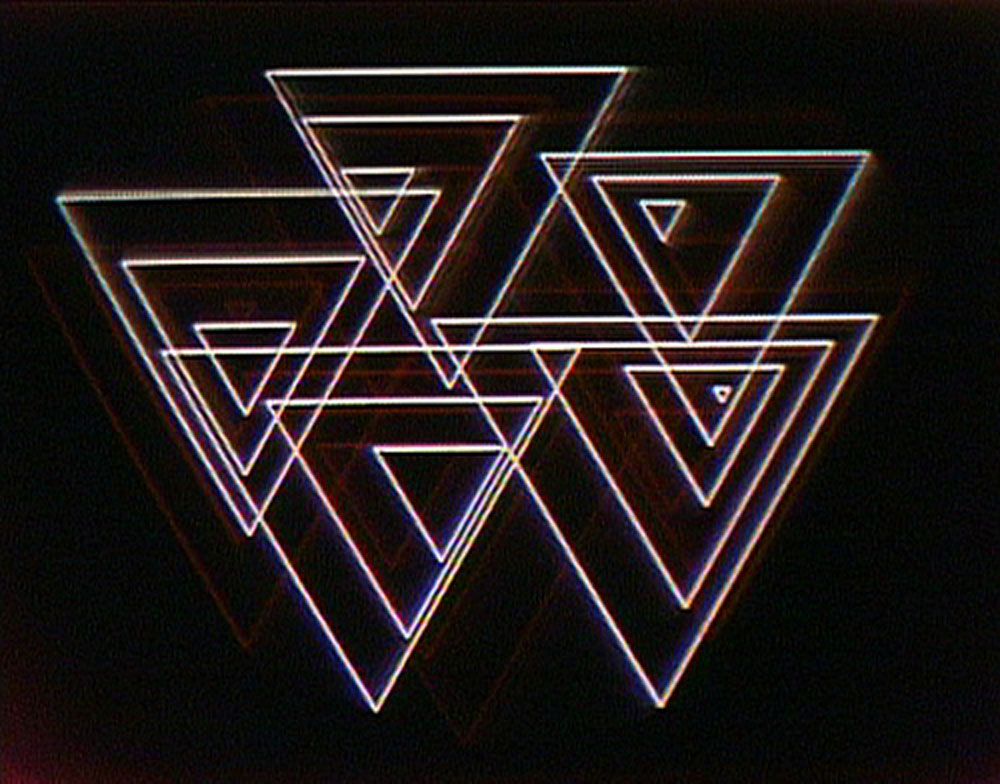PENDULUMS, CANONS AND COMPUTERS. THE WHITNEYS' NOTION OF VISUAL MUSIC
Henning Engelke
28 September 2017
Lecture and film program as part of the exhibition "John & James Whitney: Through the Stargate"
John & James Whitney: Films 1944-67
Film Exercise #2-3, 1944, 4 min
Permutations, 1968, 8 min
Osaka 1.2.3, 1970, 3 min
Matrix III, 1972, 11 min
The Whitney brothers are regarded as pioneers in many areas: Visual Music, synthetic sound generation, Expanded Cinema and computer art. Interpretations of their work are manifold, referencing synaesthesia, Asian philosophy, expansion of consciousness on the one side and cold war technologies and algorithms on the other. While James is often characterised as a mystic, John is the rational technician. The talk aims at a differentiated view on their artistic and technical proceedings, which were oftentimes conceived in cooperation, in context of their social and topographic background. Instead of contributing to the glorification of their metaphysical and/or technical aspects, the talk will be about the How and Where of their work.
Private lecturer Dr. Henning Engelke currently teaches Art History at the University of Cologne as part of the inter artes visiting scholarship for the Winter Semester of 2017/18. Research focuses include non-fictional film, experimental film as well as intersections of art history, media history and history of science. Publications: Dokumentarfilm und Fotografie. Bildstrategien in der englischsprachigen Ethnologie, 1936-1986 (Berlin: Gebr. Mann 2007); Metaphern einer anderen Filmgeschichte. Amerikanischer Experimentalfilm 1940-1960 (Marburg: Schüren 2017, forthcoming).
Funding and Support
Ministerium für Familie, Kinder, Jugend, Kultur und Sport des Landes Nordrhein-Westfalen
Images
1 — John & James Whitney, Photo: Carl Machover
2 — John Whitney: Permutations, 1968
3 — John Whitney: Martix III, 1972


